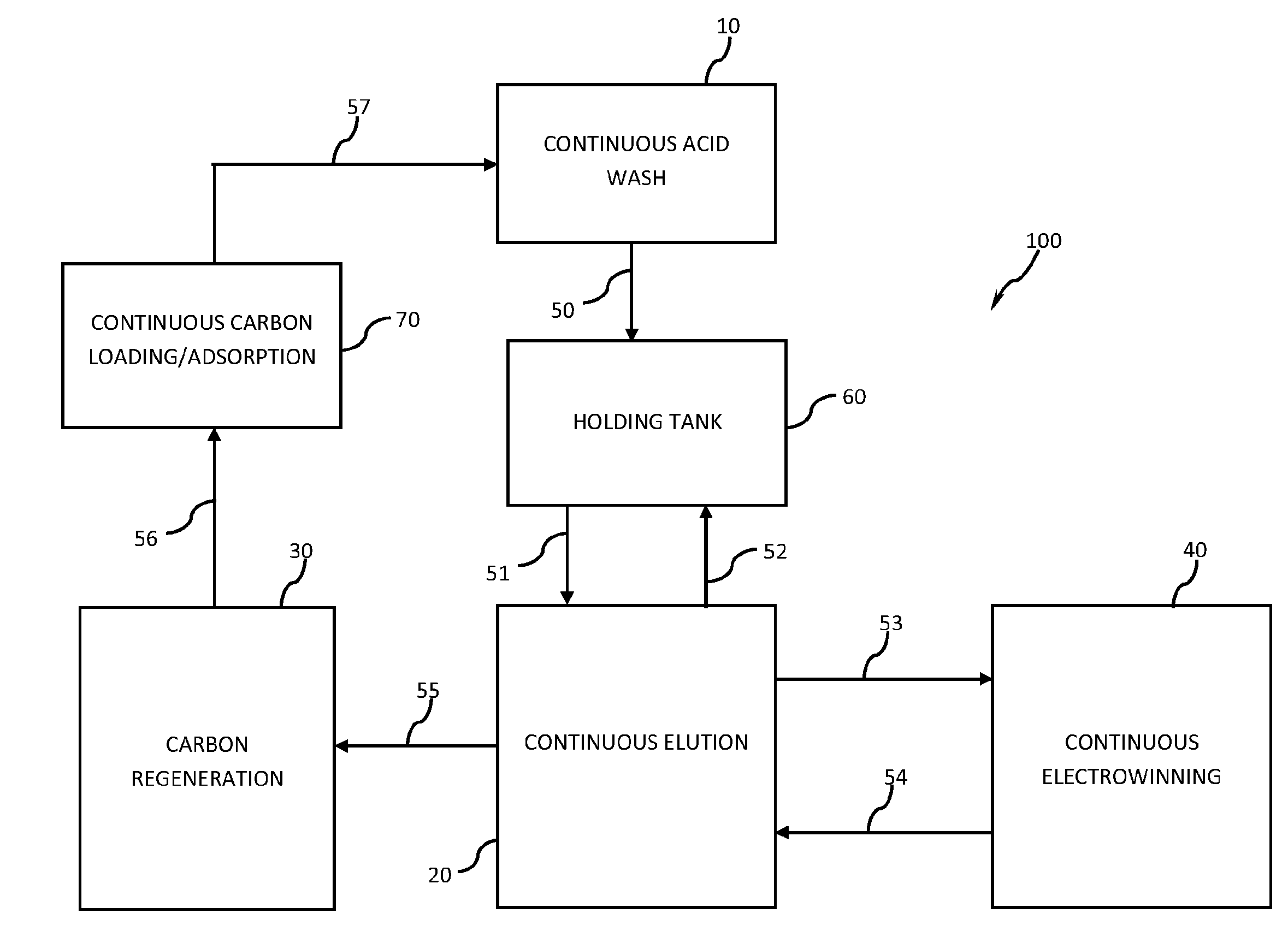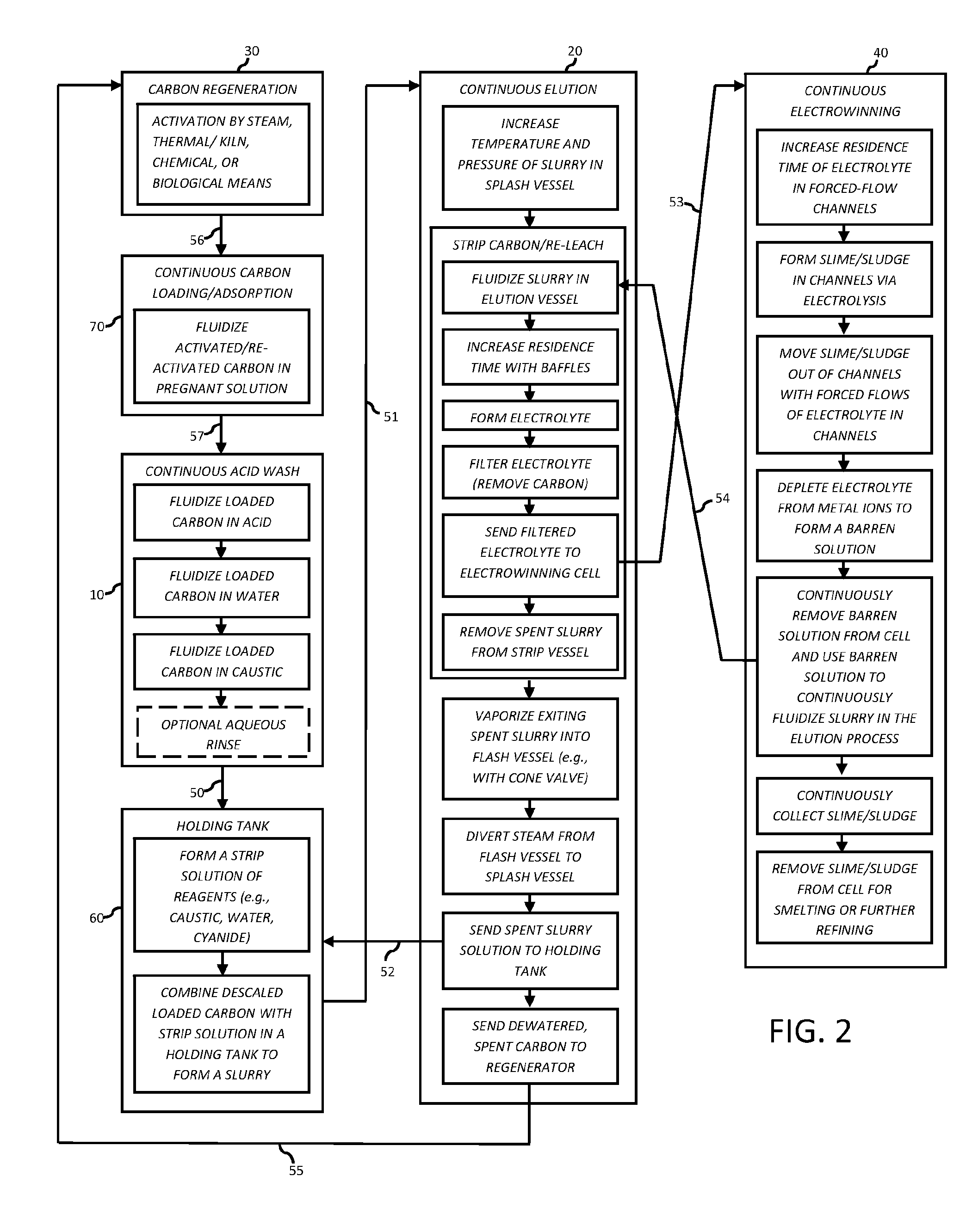System and process for the continuous recovery of metals
- Summary
- Abstract
- Description
- Claims
- Application Information
AI Technical Summary
Benefits of technology
Problems solved by technology
Method used
Image
Examples
example 1
[0099]A water-based, loaded carbon slurry 57 comprising approximately 30-300 oz / ton gold and approximately 30% wt / wt, activated coconut shell carbon is delivered to a continuous acid wash system 10′. First, inorganic components, namely calcium and magnesium carbonate, are removed from the loaded carbon by fluidizing a bed of loaded active carbon with a dilute aqueous acid solution comprising approximately 1-5 wt % hydrogen chloride (HCl) and / or nitric acid (HNO3) in an acid wash tank 12, 200. The loaded active carbon is continuously transferred from the acid wash tank to an aqueous rinse tank 14, 200′ where the loaded active carbon is fluidized and cleaned with water. The loaded carbon is subsequently continuously transferred from the aqueous rinse tank 14, 200′ to a caustic rinse tank 16, 200″. The pH of the loaded active carbon delivered to the caustic rinse tank is raised above 10 by a caustic solution comprising approximately 1-3 wt % sodium hydroxide.
[0100]The basic descaled lo...
PUM
| Property | Measurement | Unit |
|---|---|---|
| Adsorption entropy | aaaaa | aaaaa |
Abstract
Description
Claims
Application Information
 Login to View More
Login to View More - R&D
- Intellectual Property
- Life Sciences
- Materials
- Tech Scout
- Unparalleled Data Quality
- Higher Quality Content
- 60% Fewer Hallucinations
Browse by: Latest US Patents, China's latest patents, Technical Efficacy Thesaurus, Application Domain, Technology Topic, Popular Technical Reports.
© 2025 PatSnap. All rights reserved.Legal|Privacy policy|Modern Slavery Act Transparency Statement|Sitemap|About US| Contact US: help@patsnap.com



